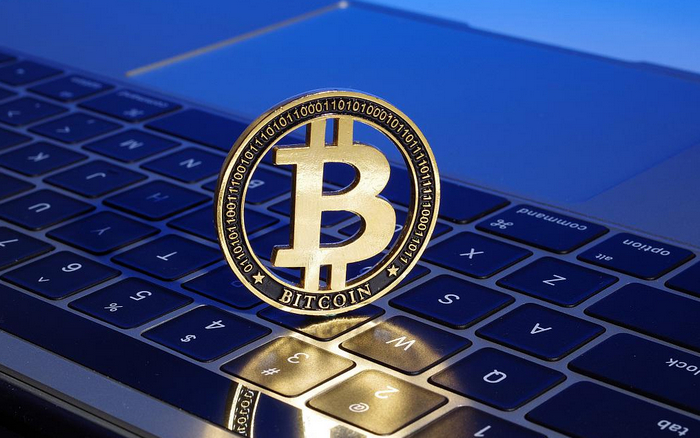Bitcoin fell more than $89,000 in the early trading on Tuesday, February 25, due to the strengthening of the yen and the Bank of Japan's interest rate hikes. Bitcoin is closely related to global financial markets, and it is doubtful whether it can get rid of the shadow of July's plunge this time.

Recently, the cryptocurrency market has been changing, and the price trend of Bitcoin has attracted much attention. On February 25, CoinDesk reported that Bitcoin fell below $89,000 in early European trading on Tuesday, hitting a low of $88,500, the highest since mid-November. Meanwhile, Nasdaq Futures fell 0.3%, indicating that the three consecutive days of decline will continue, and the technology index has fallen by more than 4% since February 18.
The fluctuations in Bitcoin prices have always been closely linked to the dynamics of global financial markets. An important factor behind this decline in Bitcoin price is the strengthening of the yen. The safe-haven currency, the Japanese Yen, exchange rate against the U.S. dollar, is expected to challenge the nearly three-month high of 148.84, set on Monday. The market bets that the Bank of Japan will raise interest rates, causing the yen to rise nearly 6% in six weeks.
Looking back on history, in July, the news of the Bank of Japan's interest rate hike caused the yen to soar, which in turn triggered widespread risk aversion. This sentiment quickly spread to the cryptocurrency market, with Bitcoin plunging from about $65,000 to $50,000 in just a few days, causing huge losses to investors. Now, the Bank of Japan's interest rate hikes have reappeared, and the market is worried about whether history will repeat itself.
From a macroeconomic perspective, the impact of the Bank of Japan's monetary policy adjustment on the global financial market cannot be underestimated. Once the Bank of Japan decides to raise interest rates, it will lead to changes in global capital flows. A large amount of funds may return to Japan to look for higher returns. This is undoubtedly a huge challenge for the Bitcoin market that relies on capital inflows.
In the past, Bitcoin was often regarded as a safe-haven asset. During times of global economic instability, investors often invested their funds in Bitcoin in order to maintain and increase their assets. However, when the yen strengthens and the market risk aversion sentiment turns to the yen, Bitcoin's safe-haven attributes seem to be challenged. Investors are beginning to re-examine Bitcoin’s position in the portfolio.
From a technical analysis perspective, the price trend of Bitcoin also presents some signals worth paying attention to. The recent decline in Bitcoin price has caused some changes in its technical indicators. For example, some commonly used technical indicators such as the Relative Strength Index (RSI) show that Bitcoin may be oversold, which means that the price of Bitcoin may rebound. However, market uncertainty is still high, and technical analysis can only be used as a reference.
For long-term Bitcoin investors, they focus more on the fundamentals of Bitcoin. Bitcoin’s decentralized and limited supply characteristics make it unique in the global monetary system. Despite the sharp short-term price volatility, Bitcoin’s value is still recognized by many investors in the long run.
For short-term investors, short-term market fluctuations are their focus. Short-term volatility in the Bitcoin market may intensify under the influence of the Bank of Japan's rate hikes. Investors need to pay close attention to market trends and adjust their investment strategies in a timely manner to avoid losses.
The correlation between Bitcoin and other financial assets is also changing. In the past, Bitcoin had a high correlation with risky assets such as technology stocks. However, with the changes in the market environment, the relationship between Bitcoin and safe-haven assets such as the Japanese yen has gradually attracted attention. This change in correlation makes investors more cautious when building investment portfolios.
In the cryptocurrency market, in addition to Bitcoin, other digital currencies have also been affected by market volatility. The prices of digital currencies such as Ethereum and Litecoin have also adjusted to varying degrees as the price of Bitcoin falls. This shows that the entire cryptocurrency market has strong linkage.
Regulatory factors are also important factors that affect the price of Bitcoin. cryptocurrency regulation has been different across countries around the world, and some countries have strengthened regulation of cryptocurrencies, which may have an impact on market liquidity and investor confidence. Changes in regulatory policies may further exacerbate market uncertainty amid the Bank of Japan’s remarks on interest rate hikes.
Investor sentiment also greatly affects the price trend of Bitcoin. When market panic occurs, investors often choose to sell Bitcoin, causing prices to fall. And when market sentiment is stable, investors may buy Bitcoin again. Therefore, changes in investor sentiment are also important factors that need to be paid attention to.
At present, the market has different opinions on whether Bitcoin can get rid of the shadow of the July plunge. Some investors believe that Bitcoin has already had a certain risk resistance after long-term development, and the Bank of Japan's interest rate hike comments may not have much impact on it. Other investors are cautious, fearing that history will repeat itself and that Bitcoin prices may fall sharply again.
To sum up, the reappearance of the Bank of Japan's interest rate hikes has brought huge uncertainty to the Bitcoin market. Whether Bitcoin can get rid of the shadow of the July plunge needs to be comprehensively considered, including the global economic situation, the Bank of Japan's monetary policy, market supervision policy, and investor sentiment. Investors need to pay close attention to market trends and make investment decisions with caution.















































































